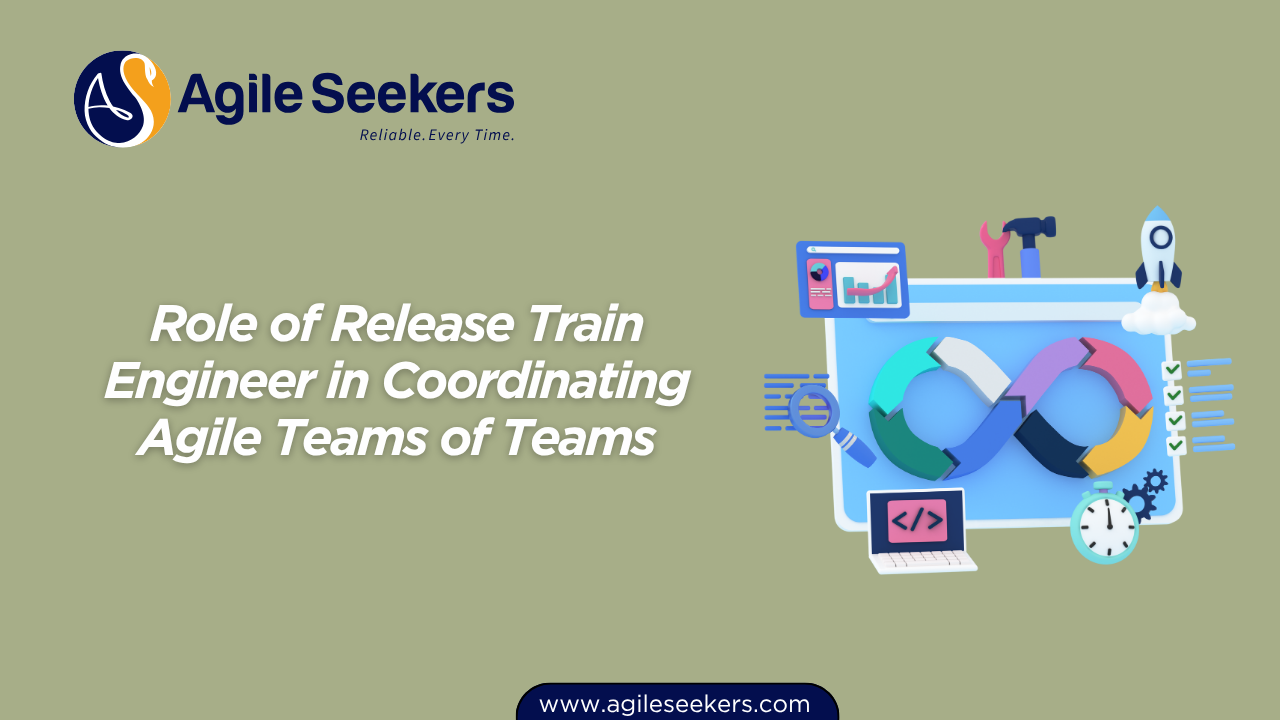Role of Release Train Engineer in Coordinating Agile Teams of Teams

Coordinating multiple Agile teams within a large enterprise delivery effort requires more than basic Scrum knowledge. When multiple Scrum teams align under a single Agile Release Train (ART), the need for structured orchestration becomes critical. This is where the Release Train Engineer (RTE) plays a vital role.
The RTE acts as a chief Scrum Master for the ART, guiding Agile teams, ensuring alignment with program goals, and fostering relentless improvement across the program level.
Understanding the RTE’s Position in SAFe
In the Scaled Agile Framework (SAFe), the ART is a long-lived team of Agile teams that works toward a common goal. The RTE helps synchronize delivery across these teams and drives cross-team collaboration. The RTE doesn't just manage the train—they enable it.
If you're preparing to take on this role, the SAFe Release Train Engineer certification training provides the tools, mindset, and methods required.
Core Responsibilities of a Release Train Engineer
Let’s break down the key areas where the RTE brings structure and value:
1. Facilitating Program-Level Events
RTEs plan, schedule, and facilitate all major ART ceremonies, including:
-
Program Increment (PI) Planning
-
ART Syncs (Scrum of Scrums + PO Sync)
-
System Demos
-
Inspect and Adapt workshops
These events keep everyone aligned and provide visibility across the ART. RTEs ensure these sessions are purposeful, time-boxed, and focused on delivering value.
2. Driving Cross-Team Coordination
Each Agile team focuses on its own backlog and sprint. The RTE ensures:
-
Teams align on shared objectives
-
Interdependencies are tracked and resolved
-
Delivery risks are identified early
-
Teams communicate effectively without silos
In this capacity, the RTE collaborates heavily with Scrum Masters, Product Owners, and Product Managers. For those supporting this function, understanding the SAFe Scrum Master certification helps align roles at the team level.
Collaborating Across Roles
RTEs don’t operate alone. They work closely with other key SAFe roles:
Product Management
-
Ensures the vision and backlog are aligned across teams
-
Communicates business context and prioritization
-
RTE facilitates these updates in PI Planning and during ART Syncs
To work effectively with Product Managers, knowledge of the SAFe Product Owner/Product Manager (POPM) certification can bridge understanding of value delivery.
Scrum Masters and Agile Teams
-
Resolve blockers raised by Scrum Masters
-
Promote agile coaching at the program level
-
Improve flow metrics and reduce friction between teams
Advanced Scrum Masters benefit from training like the SAFe Advanced Scrum Master certification to support RTEs in building high-performing teams.
Architects and Business Owners
RTEs ensure solution intent aligns with delivery capabilities. They facilitate collaboration with System Architects, Solution Engineers, and Business Owners during PI Planning and ongoing backlog refinement.
The RTE as a Servant Leader
RTEs aren’t directive managers. Instead, they practice servant leadership by:
-
Supporting decision-making rather than dictating it
-
Enabling collaboration and removing barriers
-
Promoting Lean-Agile thinking at all levels
They focus on building a healthy ART culture. This includes driving adoption of the SAFe Core Values: alignment, built-in quality, transparency, and program execution.
Metrics and Improvement
RTEs track and report on ART-level performance through:
-
Flow metrics (flow time, load, efficiency)
-
Predictability measure (ART PI Objectives vs actual)
-
Team and ART-level retrospectives
They lead Inspect & Adapt workshops to convert lessons into action items. The ability to analyze trends and convert feedback into systemic improvement is a signature skill of a strong RTE.
To sharpen this skillset, Leading SAFe certification training provides foundational knowledge on how Lean and Agile principles apply at scale.
Handling Dependencies and Risks
Managing inter-team dependencies and program-level risks is where the RTE's coordination power becomes clear. Using tools like:
-
Program Boards
-
ROAM boards (Risks: Resolved, Owned, Accepted, Mitigated)
-
Dependency tracking systems
The RTE ensures nothing slips through the cracks between teams.
They also coach Release Train participants to adopt a proactive mindset about dependencies instead of reactive firefighting.
Enabling Continuous Delivery and DevOps Culture
While RTEs are not DevOps engineers, they are key enablers of:
-
Pipeline improvements
-
System-level demos
-
Value stream mapping to optimize flow
-
Test automation and release readiness
They promote collaboration between development and operations. For those aiming to deepen technical awareness in these areas, external resources like SAFe DevOps or SAFe CALMR principles are useful learning paths.
Coaching and Lean-Agile Transformation
RTEs are not just facilitators—they are change agents. They:
-
Coach leaders and teams on Agile mindset and Lean principles
-
Support organizational readiness for SAFe implementation
-
Drive relentless improvement and innovation culture
-
Encourage experimentation and limit WIP across the ART
They model the Lean-Agile mindset and guide the entire train to adopt it over time.
Conclusion
The Release Train Engineer is central to the success of an Agile Release Train. With responsibilities that span facilitation, coaching, coordination, metrics, and Lean leadership, the RTE ensures that multiple Agile teams can operate as one synchronized unit.
Whether you’re a Scrum Master evolving into a broader role or a leader driving change at the program level, understanding the RTE function is essential. Training like the SAFe Release Train Engineer certification helps professionals build the mindset, toolset, and skill set required to guide ARTs effectively.
If you're considering stepping into or growing within this role, it's also helpful to understand complementary certifications like:
Together, these build a strong foundation to support enterprise-wide Agile transformation—guided and empowered by capable RTEs.
Also read - What It Takes to Launch a New Agile Release Train Successfully
Also see - Dependency Management in ARTs: Strategies to Reduce Delivery Bottlenecks




















